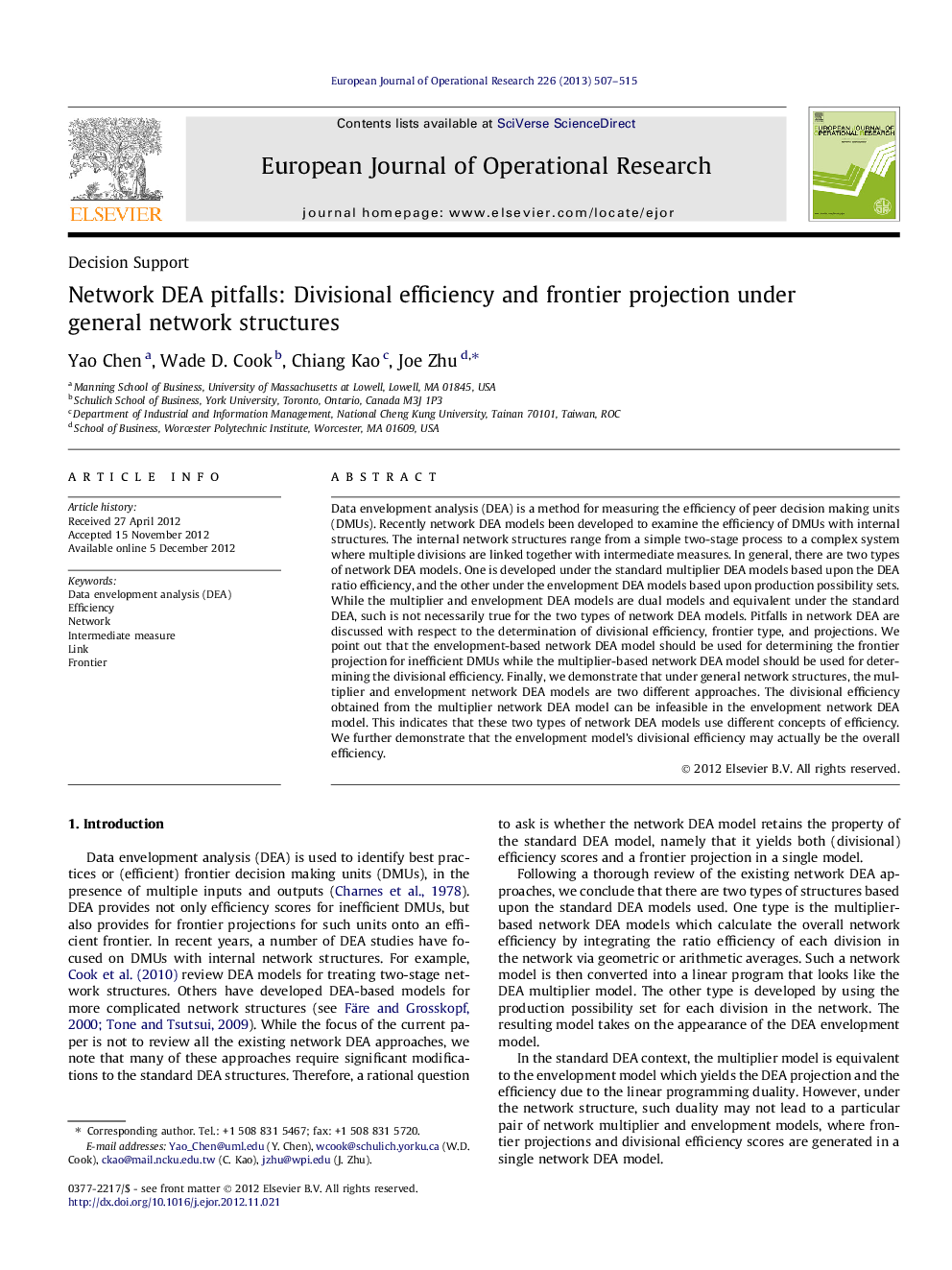| Article ID | Journal | Published Year | Pages | File Type |
|---|---|---|---|---|
| 479967 | European Journal of Operational Research | 2013 | 9 Pages |
Data envelopment analysis (DEA) is a method for measuring the efficiency of peer decision making units (DMUs). Recently network DEA models been developed to examine the efficiency of DMUs with internal structures. The internal network structures range from a simple two-stage process to a complex system where multiple divisions are linked together with intermediate measures. In general, there are two types of network DEA models. One is developed under the standard multiplier DEA models based upon the DEA ratio efficiency, and the other under the envelopment DEA models based upon production possibility sets. While the multiplier and envelopment DEA models are dual models and equivalent under the standard DEA, such is not necessarily true for the two types of network DEA models. Pitfalls in network DEA are discussed with respect to the determination of divisional efficiency, frontier type, and projections. We point out that the envelopment-based network DEA model should be used for determining the frontier projection for inefficient DMUs while the multiplier-based network DEA model should be used for determining the divisional efficiency. Finally, we demonstrate that under general network structures, the multiplier and envelopment network DEA models are two different approaches. The divisional efficiency obtained from the multiplier network DEA model can be infeasible in the envelopment network DEA model. This indicates that these two types of network DEA models use different concepts of efficiency. We further demonstrate that the envelopment model’s divisional efficiency may actually be the overall efficiency.
► We discuss pitfalls in network DEA respect to divisional efficiency and projection. ► Envelopment-based network DEA model should be used for frontier projection. ► Multiplier-based network DEA model should be used for divisional efficiency. ► The multiplier and envelopment network DEA models are two different approaches.
